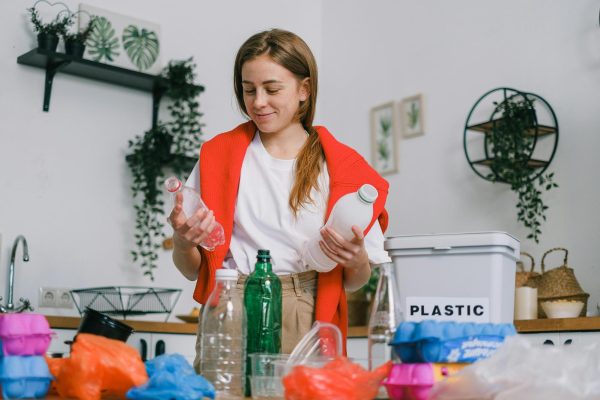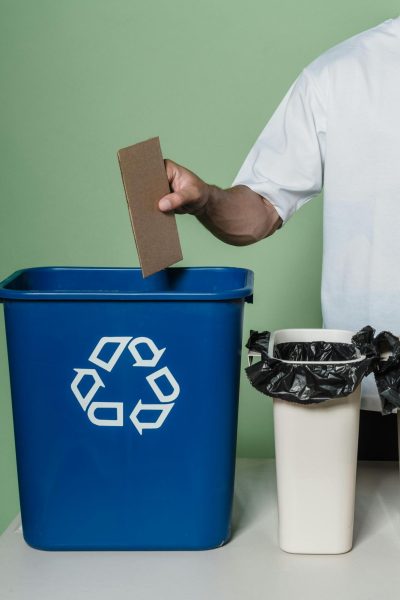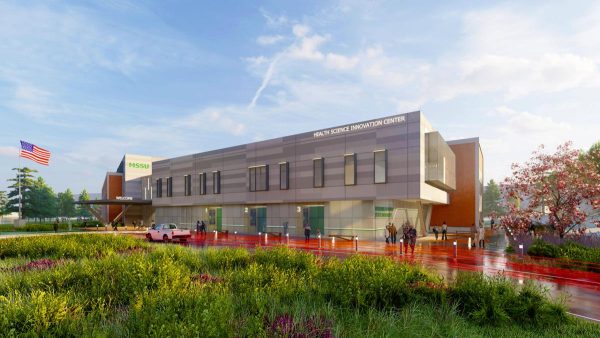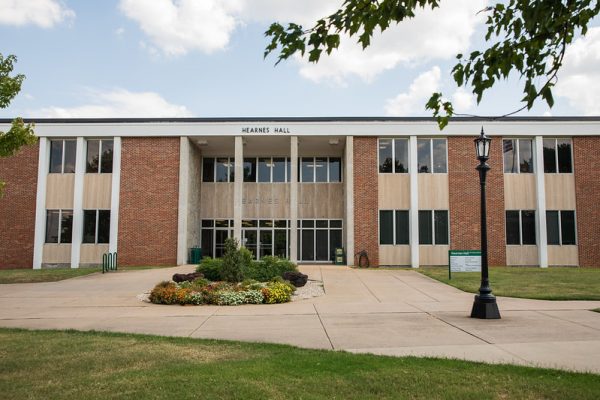From Whiteboard to Blackboard
The world has been challenged by the effects and concerns of the COVID-19 virus.
It has challenged governments, businesses, schools, families, and individuals to adapt to the ever changing environment.
On Mar. 13 Missouri Southern made the decision to make adjustments to accommodate due to COVID-19 concerns, which resulted in a campus wide closure.
The campus closure forced the University to offer classes online for the remainder of the academic year.
Due to the online transition, the University has accelerated in its technology and expanded its experience to maintain a positive learning environment across all platforms.
One of the first challenges presented to administration was providing access to the hardware necessary to complete or conduct classes on a virtual platform.
The situation brought on the need for advanced technology for students and faculty without internet access, dependable computers, or software specific to certain classes. Vice President of Academic Affairs and Provost, Dr. Paula Carson said that they conducted polls to determine what were the greatest needs of students within the campus community.
“Personally, just having access to internet, I had to drive to my stepdad’s house to use his, and it was just a hassle to drive from my house to his house just to use wi-fi and then drive home,” said Gaby McNary, junior, art education major.
Computers, wi-fi access, and the ability to print were some of the biggest student needs. Federal funding through the CARES Act was used to provide extended wi-fi to University parking lots and hotspots to faculty members and students that did not have personal access.
Another issue linked to student hardware was encountered when it came time to proctor accredited testing – proper camera and monitoring equipment was necessary.
The University was able to utilize the computer lab located in the Criminal Justice Center on campus for those who did not have access to this hardware outside of school.
In the end, these needs were filled through loan programs and federal funding and has helped create the infrastructure needed to provide more alternative ways of learning to students if needed in the future.
Back in March, as the possibility to move to a digital format became a reality, the administration quickly communicated with faculty and staff to prepare courses to pivot online using Learning Management Systems such as Blackboard. The ultimate decision came as students left for the week of Spring Break. Students were told the remainder of their classes would resume online the week following Spring Break.
Southern connects each course to Blackboard whether it is an online class or taught in a traditional setting, because each course already had an online presence, this became the foundation for pivoting to virtual learning in the spring.
The campus was faced with a very uncertain future, professors spent spring break preparing for the transition from ground classes to virtual classes with the help of the distance learning faculty.
This was helpful for many professors including Assistant Professor of Design, Ed Outhouse.
“So far I haven’t done that much virtual teaching. I was not at all prepared for the campus to be closed for the rest of the semester. I was anticipating a two- or three-week closure,” said Outhouse.
A library of information was quickly established as administration and faculty contributed resources and shared creative approaches to teaching virtually.
The faculty in the distance learning offices also conducted polls asking instructors what digital software tools they thought would be most helpful for virtual instruction.
After the results were collected, money from the CARES Act grant was used to purchase licenses for several digital software platforms.
The software was compiled creating a “Digital Backpack” of resources for instructional use. Through the resources provided by the University and timely communication, instructors were encouraged to keep the virtual environment simple, though effective and professional.
As the Director for Distance Learning, Scott Snell said Southern functions as a ‘brick and mortar school.’
The courses were meant to shift in order to meet the needs of the COVID-19 situation not in order to permanently alter the school’s learning environment.
However, other professors, such as Assistant Professor of Spanish, Leslie Smith transitioned classes easily.
“I’ve been teaching online for almost ten years, so going virtual wasn’t completely foreign to me,” said ProfSmith.
Although Prof. Smith didn’t find many difficulties in the transition, Smith teaches a skills-based course in Spanish conversation, which was meant to be taught live.
Prof. Smith was challenged to find ways to accommodate for quality teaching and experience on a virtual platform. Through Zoom, Prof. Smith was able “to have some synchronous meetings with my students.”
She went on to explain that she adopted what is now known as the “High-Flex Model.” This model of teaching is a type of hybrid academic environment which created a virtual learning environment that simulated a traditional classroom experience.
Even as a temporary transition, going from in class environments to virtual learning platforms brought obstacles for some students. Not all were sure how to utilize the new technology and struggled with learning course materials on the new platform.
“We went from whiteboard to Blackboard,” said former Southern student Macy Smith.
“Some of the biggest challenges for me is just figuring out the new technology that comes with it,” said Regan Stockman, junior, health administration. “Sometimes it’s just learning the technology, to be able to learn what you need to know for an exam to get an A in the class.”
Students depended both on their professors and classmates to share what they were learning and troubleshoot problems that arose with remote learning.
McNary said that some virtual classes using the “high-flex” model were easier and less time consuming but the interaction between professors and students, while not quite as effective or engaging as in person instruction, did not lose its value.
Prof. Smith said, “the students have been really great too” and said how they have been very adaptable and understanding both in the spring and now with adaptations in the classroom.
Snell said that good communication is what allowed the pivot to virtual learning its success.
“There was a lot of communication from administration to the faculty and we didn’t have any choices in the matter and everyone did the best they could, given the circumstances,” said Outhouse.
Administration, faculty, and students agree that the campus community as a whole pulled together and pushed forward to do their best in maintaining academic integrity and provide the best education possible under difficult circumstances.
This fall, Southern was able to once again open its doors. Now that administration, faculty, and students are back on campus, providing and attending in person classes, everyone seems to be pleased to have returned despite campus social distancing and mask policies.
“We’re just hoping we can have the ability to stay on campus if people can just stick with wearing their mask and doing what the guidelines say,” said McNary.
Stockam also said that when learning online she missed the social aspect of college learning. Students as a whole are pleased to be receiving traditional instruction, however, even these familiar environments are not quite back to normal. Many faculty members are continuing to use the high-flex model and incorporating more technology from COVID responses into their traditional instructional environments.
Prof. Smith said, “other than having to wear masks and speak a little louder to get through the mask, that class is running as normal.”
Yet for another class, they use the high flex model were class meets in the classroom once a week and the rest online. She said, “all the new tech tools that we have available to us through distance learning have been awesome. You know, getting to explore new ways to reach our students so it’s not such a lonely experience to take an online course.”
With new technologies in their Digital Backpack, online and in class teaching will never be exactly the same and while Southern is glad to be back on campus, administration says they have no intention of ever becoming an online school.
After explaining the new Digital Backpack, Snell said, “what this has done, yeah, is we’re seeing teachers integrate these technologies into their teaching, even if they’re not teaching online. So, I think it has had a lasting effect.”
In the future, if another occasion should arise where classes could not be held on campus, the infrastructure and community are ready to learn online.
“I’m not one of these people that’s afraid of new technology. I love it because I think it facilitates so many things that ten or fifteen years ago, we couldn’t do,” said Smith.
For example, one of the new technologies, Honorlock, is an online proctor application that creates a remote environment which maintains student’s academic integrity in a situation where they would be unable to take a proctored test onsite, they are provided secure online proctoring of accredited testing. The distance learning faculty are closely monitoring which of these technologies are most used and most effective for positive student experience and learning in order to keep these technologies available into the future.
As the University faced an unprecedented situation, it challenged members at all levels within the university to expand and think outside the box to meet the needs and expectations of higher learning. Together, campus members of all levels worked to build a stronger community in uncertain times by quickly adapting new technologies to create virtual learning environments. If classes do remain on campus, post-pandemic, the technology advancements will provide a richer and more dynamic learning environment on campus.
The virtual resources now available to students enriches the learning environment of those who had online classes before the pandemic as well as classes that will be taught after the pandemic is over.
While health concerned policies may fade away, it looks like the new technologies are here to stay.
Your donation will support the student journalists of Missouri Southern State University. Your contribution will allow us to purchase equipment and cover our annual website hosting costs.





























